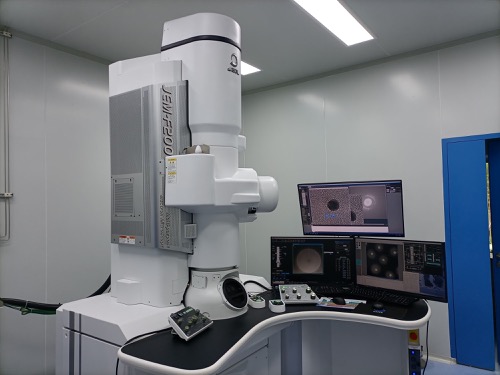What is an electron microscope?
![]()
An Electron microscope is an advanced scientific instrument that uses electrons to produce highly magnified images of objects at a very high resolution. Unlike light microscopes, which use photons of light to produce an image, electron microscopes use a beam of electrons to illuminate the object being studied. The two main types of electron microscopes are transmission electron microscopes (TEM) and scanning electron microscopes (SEM). TEMs use a beam of electrons to pass through a thin sample, producing an image of the internal structure of the sample. SEMs, on the other hand, use a beam of electrons to scan the surface of a sample, producing a highly detailed, three-dimensional image. Electron microscopes have revolutionized many fields of science, including biology, materials science, and nanotechnology, allowing scientists to study the structure and properties of materials and biological samples at the atomic and molecular levels. They are widely used in research, industry, and medicine, and have contributed to many important discoveries and technological advancements. Why is a vacuum necessary in an electron microscope? A vacuum is necessary for an electron microscope because electrons are easily scattered by gas molecules in the air, which would distort the image and decrease the resolution. By creating a high vacuum environment, most of the air molecules are removed, allowing the electron beam to travel freely through the sample without interacting with any gas molecules. This improves the imaging quality and allows for higher magnification and resolution. In addition, a vacuum environment also helps to prevent contamination and oxidation of the sample surface, which can also affect the imaging quality. Vacuum pump for electron microscope. A
vacuum pump is an essential component of an electron microscope as it is required to create and maintain a vacuum environment within the microscope's chamber. The vacuum is necessary because air molecules can interfere with the path of the electrons as they travel from the electron source to the sample and then to the detector, reducing the resolution and clarity of the resulting images. Therefore, a vacuum pump is used to remove air molecules and other gases from the microscope's chamber, creating a high vacuum environment.
There are several
types of vacuum pumps that can be used for electron microscopes, including oil-sealed rotary vane pumps, oil-free scroll pumps, and turbomolecular pumps. The choice of the pump depends on various factors such as the required vacuum level, the size of the chamber, and the type of electron microscope being used. For example, a scanning electron microscope (SEM) typically requires a higher vacuum level than a transmission electron microscope (TEM), and a large TEM may require a more powerful pump than a small one. Overall, the vacuum pump plays a crucial role in the performance of an electron microscope by creating and maintaining the necessary vacuum environment for high-quality imaging.
Electron microscope scroll vacuum pump
Scroll vacuum pumps are not commonly used in electron microscopy as the required vacuum level is typically achieved using high vacuum pumps such as
turbomolecular pumps or diffusion pumps. These pumps can reach extremely low pressures, on the order of 10-10 Torr or lower, which are necessary for the proper operation of electron microscopes. However,
scroll vacuum pumps may be used as backing pumps to support the operation of these
high vacuum pumps. There are several advantages of using a
scroll vacuum pump for an electron microscope, including:
Oil-free operation:
Scroll vacuum pumps do not require oil for lubrication, which eliminates the possibility of oil contamination in the vacuum chamber and the electron microscope components.
High pumping speed:
Scroll vacuum pumps have a high pumping speed, which enables them to quickly evacuate the vacuum chamber and maintain a high level of vacuum.
Low noise and vibration:
Scroll vacuum pumps operate quietly and produce minimal vibration, which is important for electron microscopes that require stable and precise imaging.
Low maintenance:
Scroll vacuum pumps have few moving parts, which results in lower maintenance requirements and reduced downtime for maintenance and repairs.
Environmentally friendly:
Oil free scroll vacuum pumps are environmentally friendly and do not produce harmful emissions or waste, which is an important consideration for laboratories and research facilities.
Dernière modification le mardi 26 Septembre 2023 à 08:34:13